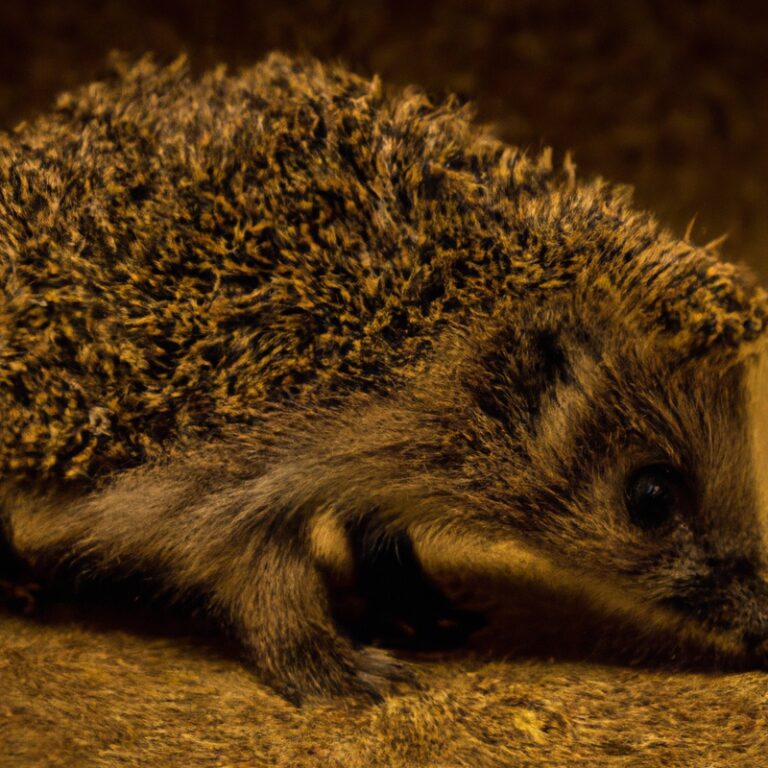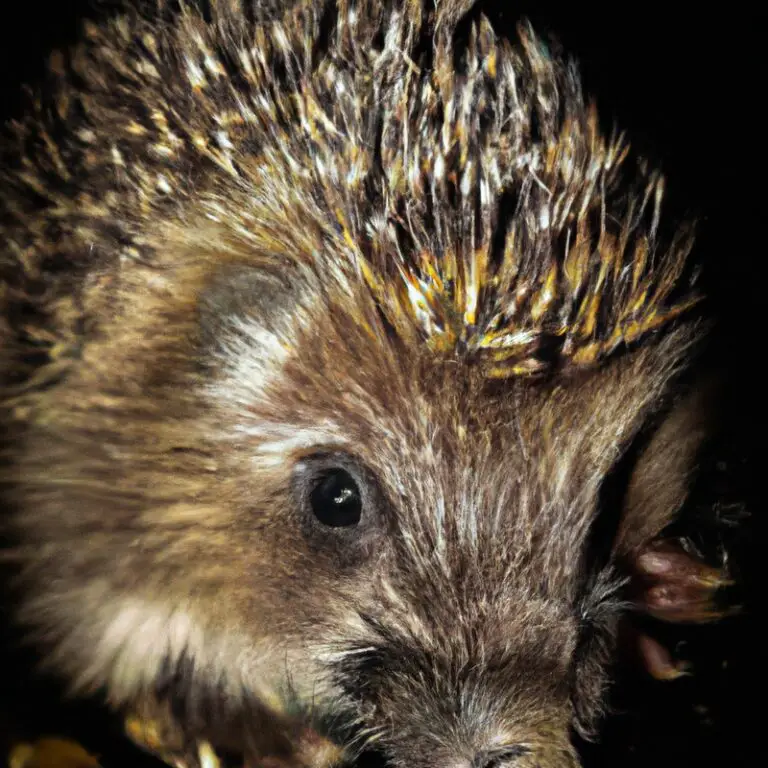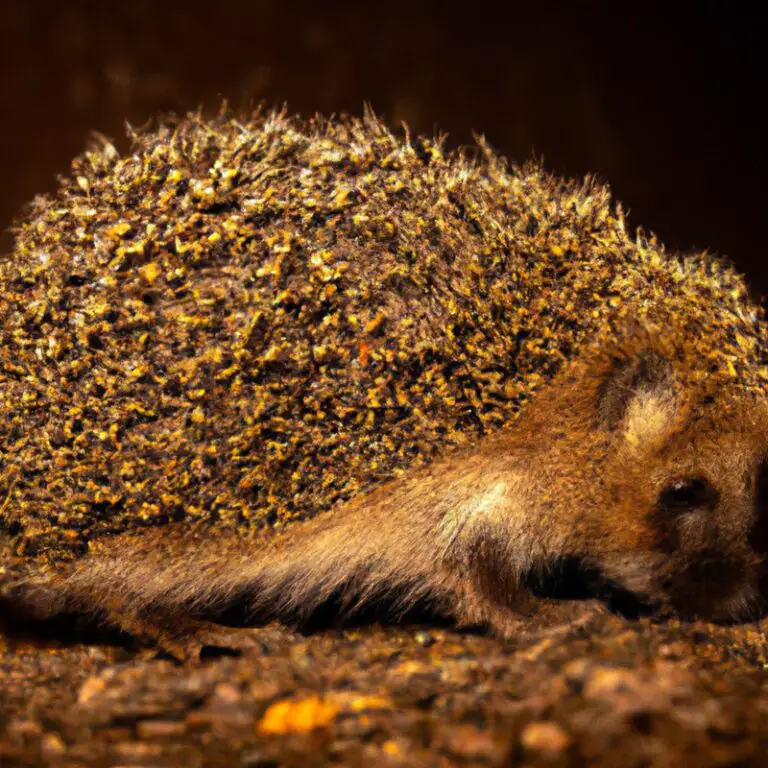How Do Hedgehogs Find Food In Urban Environments?
Key Takeaways:
- Hedgehogs have a keen sense of smell and use it to locate food in urban areas.
- Urban environments offer a variety of food sources for hedgehogs, such as gardens and compost piles.
- Hedgehogs can adapt their foraging behaviors to navigate man-made obstacles in urban settings.
- Providing supplementary food and creating hedgehog-friendly habitats can help support hedgehog populations in urban areas.
Ever wondered how hedgehogs manage to find food in the hustle and bustle of urban environments?
These adorable creatures have a few tricks up their spiky sleeves when it comes to tracking down their next meal.
In this article, we’ll explore the fascinating world of hedgehog diets and delve into their ingenious hunting techniques.
From using their incredible sense of smell to foraging and rooting behaviors, hedgehogs know how to navigate their way around the concrete jungle.
We’ll also discuss the various food sources available to them and the challenges they face in urban settings.
So, let’s dive in and unravel the secrets of these resourceful little foragers!
| Method | Description |
| Sense of Smell | Hedgehogs have a keen sense of smell which helps them locate food sources in urban environments. |
| Hearing | They can listen for sounds made by prey, such as insects or small rodents. |
| Night Vision | Hedgehogs have good night vision, allowing them to see in low light conditions and find food. |
| Tactile Sensitivity | They use their sensitive whiskers to detect objects and potential food sources while navigating their environment. |
| Exploration | Hedgehogs explore their surroundings to find gardens, compost heaps, or garbage bins where they can find food. |
Hedgehog Diet
Hedgehogs have a natural diet consisting of insects, worms, and other small invertebrates found in the wild. In urban environments, they may adapt and make dietary changes to include human-provided food.
Natural diet of hedgehogs in the wild
Hedgehogs have a natural diet that mainly consists of insects, worms, and other small invertebrates.
They are skilled hunters and will use their excellent sense of smell to locate their prey.
Hedgehogs also eat some plant material, such as fruits and berries, to supplement their diet.
They are opportunistic feeders and will consume a variety of food sources they come across in their natural habitats, allowing them to adapt to changes in their environment.
This diverse diet is essential for their overall health and well-being.

Adaptation to urban environments and dietary changes
Hedgehogs have adapted well to urban environments by making some dietary changes.
In cities, hedgehogs may rely more on human-supplied food, such as cat or dog food left outside by residents.
They have also been known to consume bird eggs and larvae found in compost heaps or gardens.
However, it’s important to note that human-supplied food should not make up the entire diet of a hedgehog, as they still need a variety of insects, slugs, and snails to stay healthy.
It’s best to provide a balanced diet for hedgehogs in urban areas by offering a mix of natural food sources and supplementary food options.

Hunting Techniques
Hedgehogs use their sense of smell to locate food sources and engage in foraging and rooting behavior. Additionally, they rely on their hearing to locate prey and exhibit predatory behavior towards insects and invertebrates.
Use of sense of smell to locate food sources
Hedgehogs rely heavily on their sense of smell to locate food sources. Their keen sense of smell allows them to detect and follow scent trails left by potential prey, such as insects and small invertebrates.
They use their long snouts to sniff out food hidden in grass, under leaves, or even underground.
With their acute sense of smell, hedgehogs are adept at finding food in urban environments where there may be limited natural foraging opportunities. Their ability to locate food through smell helps them navigate their surroundings and find sustenance.
Foraging and rooting behavior
Hedgehogs have unique foraging and rooting behavior that helps them find food in urban environments. Instead of relying solely on their sense of smell, they use their snout to push through leaves, soil, and debris in search of insects, worms, and other small prey.
This behavior is known as rooting.
Hedgehogs also have a keen sense of hearing, which helps them locate rustling sounds made by their prey. This combination of rooting and acute hearing allows hedgehogs to successfully find food in urban surroundings.
Use of hearing to locate prey
Hedgehogs have an amazing ability to use their hearing to locate prey.
They rely on their acute hearing to detect small movements and sounds made by their potential food sources.
By being able to hear the rustling of insects or the scuffling of small animals, hedgehogs can pinpoint the location of their prey.
This auditory skill helps them navigate and survive in their urban environments, ensuring they find enough food to sustain themselves.
Predatory behavior towards insects and invertebrates
When it comes to predatory behavior, hedgehogs are skilled hunters of insects and invertebrates. They use their excellent sense of smell to locate their prey and their sharp teeth to capture and consume them.
Hedgehogs are particularly fond of insects like beetles, worms, and slugs, which are abundant in urban environments.
They have a natural instinct for finding these creatures, and their small size allows them to navigate through small spaces and reach places where insects may hide. Overall, hedgehogs’ predatory behavior towards insects and invertebrates is a crucial aspect of their survival in urban areas.
Food Sources in Urban Environments
Hedgehogs in urban environments find food from natural sources, human food waste, gardens, and feeding stations to supplement their diet.
Availability of natural food sources
Hedgehogs have a remarkable ability to find natural food sources even in urban environments.
They rely on a variety of food options, including insects, earthworms, slugs, and snails.
These creatures can be found in gardens, parks, and other green spaces within cities.
Hedgehogs are also opportunistic eaters and may scavenge for scraps of food left by humans.
While the availability of natural food sources can vary, hedgehogs’ resourcefulness helps them adapt to their surroundings.
So, even in urban areas, hedgehogs manage to find enough food to survive.
Access to human food waste
Hedgehogs in urban environments have access to human food waste through several means. They may search through trash bins and garbage bags for discarded edible items.
Also, food left out for pets can attract hedgehogs looking for a meal.
Bird feeders can be another source of food waste for them. Hedgehogs are opportunistic eaters and can find sustenance in the form of human food waste, allowing them to survive and thrive in urban areas.
Role of gardens in providing food for hedgehogs
Gardens play a vital role in providing food for hedgehogs.
Here’s how:
- Natural habitat: Gardens provide a suitable environment for hedgehogs to live and find food.
- Insect attraction: By planting flowers and shrubs, you can attract insects like beetles and worms, which hedgehogs love to eat.
- Fallen fruits: If you have fruit-bearing trees or bushes in your garden, their fallen fruits can serve as a nutritious food source for hedgehogs.
- Hedgehog-friendly plants: Grow hedgehog-friendly plants like lavender or daisies, which can provide forage opportunities.
- Avoid chemicals: Using pesticides or toxic chemicals in your garden may harm hedgehogs and their food sources, so it’s best to avoid them.
- Water source: Providing a shallow dish of fresh water can help hedgehogs stay hydrated.
By considering these factors, you can create a garden that not only supports hedgehogs but also enhances biodiversity in your urban environment.
Feeding stations and supplemental feeding
Feeding stations and supplemental feeding can be helpful for hedgehogs in urban environments.
Placing feeding stations in your garden can provide a reliable food source for hedgehogs.
You can use specially designed hedgehog food or a mix of wet cat or dog food, along with water.
Supplemental feeding can help hedgehogs who struggle to find natural food sources due to urbanization.
It is important to ensure that the food is suitable for hedgehogs and that feeding stations are clean and safe.
Challenges in Finding Food in Urban Environments
Finding food in urban environments poses challenges for hedgehogs, including competition with other wildlife, hazards of consuming human food and waste, and the impact of urbanization on their populations.
Competition with other urban wildlife
Competition with other urban wildlife can pose challenges for hedgehogs when it comes to finding food.
They often have to compete with other animals such as birds, squirrels, and rats for available resources.
This can make it harder for them to find enough food to survive, especially in areas with limited green spaces.
The presence of other wildlife can also increase the risk of food scarcity and make it more difficult for hedgehogs to establish a regular food source.
Hazards of consuming human food and waste
Eating human food and waste can be hazardous for hedgehogs. It may lead to nutritional imbalances and obesity, which can have serious health consequences.
Additionally, human food often contains ingredients that are toxic to hedgehogs, such as chocolate, onions, and caffeine.
Consuming waste can also expose hedgehogs to harmful bacteria and parasites. It’s important to keep hedgehogs away from human food and waste to ensure their well-being.
Impact of urbanization on hedgehog populations
Urbanization has had a significant impact on hedgehog populations.
The expansion of cities and infrastructure has led to habitat loss for these small mammals.
Hedgehogs struggle to find sufficient food and shelter in urban environments, which has resulted in a decline in their numbers.
The loss of green spaces, increased traffic, and use of pesticides have also contributed to their decline.
This highlights the need for conservation efforts that focus on creating hedgehog-friendly habitats within urban areas and raising awareness about their plight.
Conservation Efforts and Suggestions
To conserve hedgehogs, focus on creating hedgehog-friendly habitats, reducing chemical pesticide use, and educating communities about hedgehog conservation.
Creating hedgehog-friendly habitats
To create hedgehog-friendly habitats in urban areas, there are a few simple steps you can take.
Firstly, avoid using pesticides and chemical fertilizers in your garden, as these can harm hedgehogs and their food sources.
Secondly, provide shelter like log piles, leaf piles, or hedgehog houses.
Thirdly, create access points in your boundaries, such as small holes in fences, to allow hedgehogs to move freely.
Finally, ensure there is a water source available, such as a shallow dish of water.
These small changes can make a big difference in helping hedgehogs thrive in urban environments.
Reducing chemical pesticide use
Reducing chemical pesticide use is important for the health of hedgehogs and the environment.
Here are some simple steps you can take to minimize pesticide use in your garden:
- Embrace natural alternatives: Use organic pest control methods such as companion planting, beneficial insects, and homemade remedies like soap spray or garlic spray.
- Practice good garden hygiene: Remove weeds and debris that can harbor pests, provide hiding places for hedgehogs, or attract their natural prey.
- Encourage biodiversity: Plant a diverse range of native plants to attract helpful insects and birds that can control pests naturally.
- Practice integrated pest management: Monitor your garden regularly for signs of pests and only intervene when necessary. Consider cultural and mechanical methods first before relying on chemical solutions.
- Educate yourself: Learn about pest and disease-resistant plant varieties and how to encourage natural predators in your garden.
By reducing chemical pesticide use, you can create a healthier environment for hedgehogs and other wildlife, while still maintaining a beautiful and productive garden.
Educating communities about hedgehog conservation
To educate communities about hedgehog conservation, it’s important to raise awareness about the challenges these creatures face in urban environments. Firstly, organizing workshops or events can help educate people about hedgehog behavior, their habitat requirements, and the threats they encounter.
Secondly, distributing informational brochures or pamphlets in community centers, schools, and local businesses can provide accessible knowledge.
Thirdly, using social media platforms to share tips on creating hedgehog-friendly gardens and reducing hazards can reach a wider audience. By actively engaging with communities, we can empower individuals to make a positive impact on hedgehog conservation.
Frequently Asked Questions (FAQs)
Can hedgehogs eat cat or dog food?
Yes, hedgehogs can eat cat or dog food, but it’s important to choose the right kind. Look for high-quality, meat-based options with no artificial additives.
Wet food is better than dry because hedgehogs need moisture.
Avoid foods with high amounts of carbohydrates or grains, as hedgehogs are insectivores and their digestive systems are not designed for plant-based diets. It’s best to consult with a veterinarian for specific recommendations.
Are hedgehogs beneficial for controlling pests in urban areas?
Hedgehogs are indeed beneficial for controlling pests in urban areas. These adorable creatures naturally feed on a variety of insects, slugs, and worms that are considered common pests in gardens and lawns.
By allowing hedgehogs to roam freely, they can help keep populations of pests in check, reducing the need for chemical pesticides.
Having hedgehogs around can be a natural and environmentally friendly way to control pests in your urban environment.
Final Verdict
Hedgehogs have adapted to urban environments by making dietary changes and utilizing different hunting techniques. They rely on their acute sense of smell to locate food sources and use their foraging and rooting behavior to access natural food sources and human food waste.
However, they face challenges such as competition with other urban wildlife and the hazards of consuming human food and waste.
To support hedgehogs in urban areas, it is important to create hedgehog-friendly habitats, reduce pesticide use, and educate communities about hedgehog conservation. By implementing these efforts, we can ensure the well-being of these fascinating creatures and maintain a harmonious coexistence in our urban landscapes.







